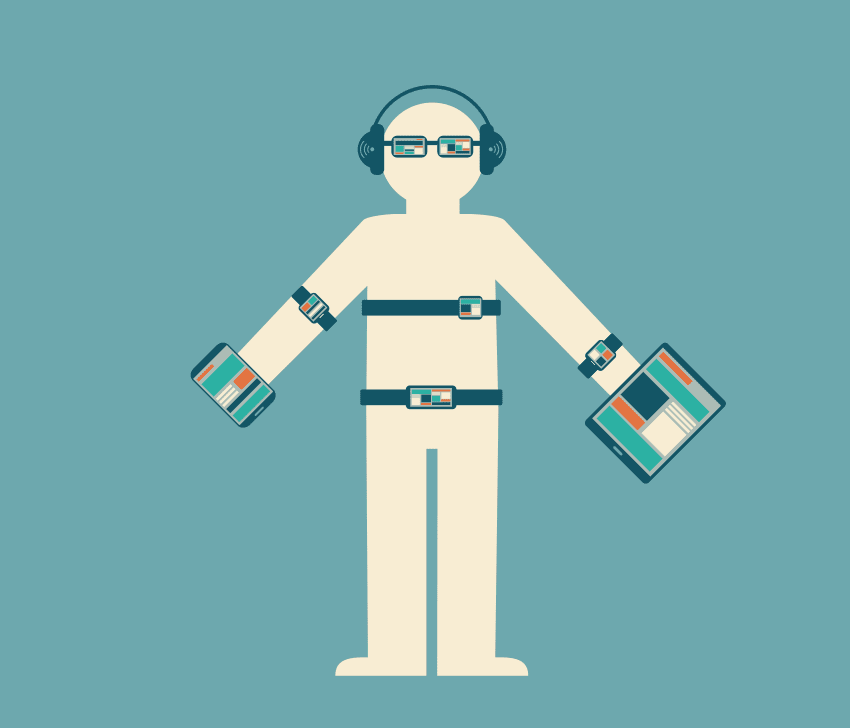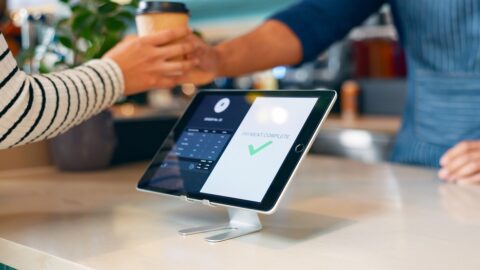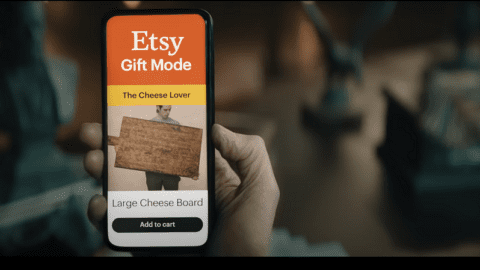Wearable technology — including smart watches and glasses — is expected to become a “must have” for consumers over the next several years, and forward-thinking retailers such as Barneys New York and Kenneth Cole are preparing for an explosion in the market. Additionally, retail organizations such as The Container Store are beginning to implement wearable technology to improve productivity across business processes.
Worldwide spending on consumer wearable technology will hit $1.4 billion by the end of 2014, according to the report from Juniper Research, titled: Smart Wearable Devices: Fitness, Healthcare, Entertainment & Enterprise: 2013-2018. By 2018, the market will hit $19 billion.
Although Juniper concluded that device shipments will approach 130 million by 2018, wearable devices currently “represent a ‘nice to have’ and not a ‘must have’ for consumers,” according to the report.
Advertisement
But one key question emerges in light of these predictions: When will wearable technology hit a tipping point and what will the impact be for retailers?
Multiple factors will help determine whether wearable technology will become more accepted over time, according to Patrick Fitzgerald, EVP of Theatro. They must be “affordable, easy to use, and be able to deliver specific and quantifiable benefits.”
The “wearable technology” group encompasses several types, including fitness monitors, activity trackers and smart clothing. However, retailers can benefit most from smart watches and glasses, as they present new opportunities for customer engagement.
For example, Kenneth Cole recently rolled out a Google Glass app to promote its new cologne.
“Even though the technology is still in the pilot program, we want to be looked at as an innovator and early adopter,” said Lauren Nutt Bello, partner at Ready Set Rocket, the firm that worked on the app with Kenneth Cole. Using the app, consumers are encouraged to photograph themselves performing one good deed a day for 21 days.
More companies are hopping on the smart watch bandwagon, due to the hype surrounding Samsung’s line of wearables. In April 2014, PayPal will launch a payments app for the Samsung Gear 2 and Gear 2 Neo smart watches. Using the app, consumers can make mobile payments, store and use rewards, and send money to friends and family through the platform.
Luxury retailer Barneys New York also is venturing into the wearable tech world through a collaboration with Opening Ceremony, the Council of Fashion Designers of America and Intel. The organizations are creating a line of pieces that are designed by Opening Ceremony and include Intel technology. The collection will be sold exclusively at Barneys.
Integrating Wearable Smart Glasses And Watches Into The Marketing Mix
Smart watches and glasses are being spotlighted as the hottest gadgets in the consumer market. As adoption increases, how can retailers across categories incorporate wearable technology into an already complex, multichannel marketing mix?
The primary benefit of wearable technology, especially smart watches, is that they can act as a natural extension of the online or mobile brand experience.
Rather than replacing another touch point, smart watches can complement the entire omnichannel commerce journey, said Drazena Ivicic, Global Product Marketing & Strategy at Intershop, in an interview with Retail TouchPoints. Watches are “on people’s wrists all day and have potential to gain customer attention. More than anything they help entertain.”
For example, the PUMATRAC smart watch app enables users to track their running paths, time their workouts and share results via social, Ivicic explained. “As I use the app my awareness of the brand increases, which is a good thing.”
Beyond entertaining and engaging, retailers should consider how smart watches can make the customer experience more seamless and enjoyable. For example, a retailer can deliver an alert to a customer’s smart watch when their online order is delivered to their home.
“Of course you can use your mobile phone to track that information, but sometimes it’s not in your pocket or it’s in another room,” Ivicic explained. “Those short notifications about your order can be accessed easily on your smart watch.”
Smart watches also can be used to deliver timely, location-based offers, which easily tie into the entire browsing and buying journey.
“Retailers must find ways to tie wearable tech adoption into other aspects of the brand experience, leveraging things that customers already use and like as incentives to use and like wearable technology,” said Alex Romanov, CEO of iSIGN Media. “One idea would be to create customizable shopping paths for each person, while incentivizing them with real-time offers and deals along that path — it would help make customers’ shopping experiences much more convenient.”
Because wearable devices are physically attached to consumers, they can help retailers collect granular data on shoppers, including their browsing and buying patterns. Even more granular data, such as in-store shopping frequency, basket size, dollar value per item, length of stay and dwell times, can be acquired from smart devices, according to Romanov.
Retailers should leverage this information “to optimize in-store operations, such as inventory planning and product placement, based on this data, and that will improve sales,” Romanov said. “Then, retailers can look to more sophisticated strategies that utilize wearable technology’s capabilities, such as location-awareness and proximity communication.”
Potential Barriers To Wearable Technology Adoption
Smart glasses and watches can present a variety of benefits to both retailers and consumers. However, there are some issues regarding privacy that may impact adoption, according to Juniper. “Issues such as privacy commonly arise if the wearable device has a camera and gives the appearance of filming at all times.”
As more wearable products enter the market, Juniper expects that regulatory frameworks will be established to legislate their use, both from a privacy and data protection perspective.
Retailers that establish a wearable tech marketing and/or commerce strategy also should establish a set of guidelines to ensure consumers don’t feel their privacy has been violated, Romanov said. “Wearable tech has to become a natural element of the in-store experience.”
Google is educating the public — and potential Google Glass users — by promoting a set of guidelines for the “Glass Explorer community.” Among the suggestions in the extensive list of “do’s” and don’ts,” are:
- DO ask for permission. “Standing alone in the corner of a room staring at people while recording them through Glass is not going to win you any friends,” the list reported. “The Glass camera function is no different from a cell phone so behave as you would with your phone and ask permission before taking photos or videos of others.”
- DON’T “glass out.” The Google Glass technology was designed to enable users to switch between the physical and digital worlds. But “if you find yourself staring off into the prism for long periods of time you’re probably looking pretty weird to the people around you,” the site stated. “So don’t read War and Peace on Glass. Things like that are better done on bigger screens.”
The most vital “rule of thumb” for Google Glass users, appropriately, is “don’t be a Glasshole.” Google concluded:
“Respect others and if they have questions about Glass don’t get snappy. Be polite and explain what Glass does and remember, a quick demo can go a long way. In places where cell phone cameras aren’t allowed, the same rules will apply to Glass. If you’re asked to turn your phone off, turn Glass off as well. Breaking the rules or being rude will not get businesses excited about Glass and will ruin it for other Explorers.”
Workplace Wearables: Productivity Boost?
Consumers who wear smart devices have the ability to stay connected practically 24×7. However, businesses seem to have more to gain from wearable technology because it can help employees connect, communicate and engage consumers more effectively.
“An enterprise wearable, which is used as a work tool, is required to deliver quantifiable benefits like productivity improvements, increased sales, and ultimately makes the employee more efficient,” Fitzgerald said. “An enterprise wearable must be networked to the corporate network and enable employees access to critical information to enable them to do their job better.”
In the U.S., more than 38 million employees work indoors, but often are disconnected from enterprise IT systems, Fitzgerald added. These retail, hospitality and health care employees require some form of communication equipment to do their jobs effectively, and in turn, “rely on antiquated technology such as broadcast radios and overhead speakers.”
Voice-controlled, networked wearables can help address these pain points, helping employees stay connected and productive, Fitzgerald said. From a customer service perspective, wearables can enable store associates to be “heads up and hands free,” so they can “provide customer service and not be ‘heads down,’ focused on a screen.”
Theatro is breaking into the enterprise wearable technology space with the opening of a new office in Bangalore, which will serve as an extension of the company’s Dallas development team. The new team will focus on developing new technology for the enterprise wearable technology market.
“The Bangalore office will help Theatro accelerate our overall development especially in different areas of our cloud technology,” Fitzgerald reported. “We see educating retailers on the benefits of enterprise wearable technology and how they can monetize our wearable devices and apps as a critical component of our success. Showing them how easy it is to trial our solution and demonstrating the ROI through productivity improvements enables retailers to see the benefits of this new way to optimize labor costs and improve customer service.”
The Container Store is one retailer embracing enterprise wearables as part of its employee-first initiative. Using the technology, employees can communicate with each other, access information and still have meaningful interactions with shoppers.
“The key to being an employee-first culture is that with every initiative, we’re looking at how it’s going to impact the ability of our employees to take care of the customers,” said John Thrailkill, VP of Store Systems and Business Development at the Container Store, in an episode of TouchPoints TV. “That mindset applies to everything we’re doing. We’re trying to make sure the employee doesn’t have to go anywhere to get what they need. We’re working on solutions that keep that interaction with the customer ‘heads up.’”
Enterprise wearables also help address some of the security concerns regarding the technology.
“I think the enterprise space is more interesting, because the insights have the potential to be more valuable,” noted Nikki Baird, Managing Partner at Retail Systems Research. “With consumer wearables, they track data and it benefits me personally — but who else might be using that data? No matter how tightly controlled privacy is, it’s still a concern. With enterprise wearables, we know who’s tracking it and what they’re using it for, so it removes a lot of those concerns.”
Aligning New Technology With Customer And Employee Wants And Needs
The enterprise-wide benefits of wearable technology is enough for some retailers to immediately hop on the bandwagon.
Before moving forward, though, retailers need to consider their target audience, and the features and elements that would be most beneficial to them.
“Every retailer has a different target group and each group has a different way of using the call center, store, mobile phone and other channels,” Ivicic said. “It depends on the type of product the retailer sells and the business model, as well. These are the questions they need to answer first. Then, retailers can determine how to integrate any additional device that might be on the verge.”
Most importantly, retailers need to think of integration, not segregation.
Romanov concluded: “Retailers need to think of the unique capabilities that wearable technology adds to the larger retail ecosystem, and how it can work together with everything else. Wearable technology needs to be seamless. It can’t be a novelty or something external to the shopping experience.”









